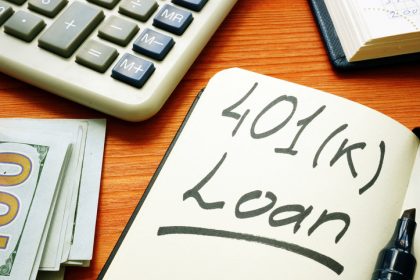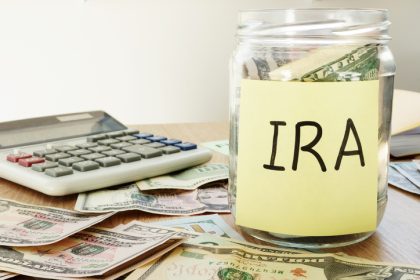Reaching your mid-thirties is a milestone that can prompt you to reflect on your financial future, especially when it comes to retirement savings. At this age, you still have decades to grow your savings, but it’s not too early to make sure you’re on the right track. Industry-developed guidelines can give you a quick estimate of how you’re doing. Considering your personal goals and situation will help you refine your answer. And whether you’ve already built up a hefty balance in your 401(k) or IRA or are just getting started, understanding how your savings stack up against common benchmarks can suggest adjustments to catch up if that’s indicated.
A financial advisor can also help you assess your current savings rate, run future projections and develop a personalized retirement plan that adapts as your life evolves.
How Much Should I Have in Retirement Savings at 35?
There’s no exact number that works for every 35-year-old retirement saver. However, financial experts have developed widely accepted benchmarks to help you evaluate whether you’re on track.
One age-based retirement saving guideline used by many planners suggests that by age 35, you should aim to have saved from one to 1.5 times your annual salary in a retirement account. So, if you’re earning $75,000 a year, your retirement savings goal should fall between $75,000 and $112,500.
Rather than looking at your savings balance, you can instead examine your savings rate. This approach holds that if you’re saving around 15% of your pre-tax earnings, you are likely on track. Using this method, a $75,000-a-year earner will put $11,250 of that income toward retirement.
These benchmarks are based on the assumption that you want to retire at around age 67 and maintain a similar lifestyle to the one you have today. Hitting this milestone by 35 can help ensure you have enough time for compound interest to work in your favor, even if your contributions remain modest later on.
Factors to Consider
While benchmarks offer a general guide, they don’t account for personal circumstances. Here are a few factors that can affect how much retirement savings you should have at 35:
- Your lifestyle goals: If you plan to retire early or travel extensively in retirement, you’ll likely need more saved than someone with more modest goals. Tailoring your savings to your ideal retirement lifestyle can help you set more accurate targets.
- Current savings rate: If you’re contributing at least 15% of your income annually, including employer matches, you’re likely on a solid path. Lower contribution rates may require you to save more aggressively in the future.
- Investment returns: If your retirement funds are invested in a diversified portfolio with moderate to high returns, you may not need to save as much as someone keeping their money in cash or low-yield accounts.
- Other retirement income sources: Anticipating a pension, inheritance or significant real estate equity? These can reduce the amount you need to save in retirement-specific accounts.
- Family and financial obligations: Supporting children, aging parents or paying off debt can make saving more difficult, but knowing your long-term needs allows you to adjust your strategy without falling behind.
If you’re not quite at the one-times-salary benchmark, don’t panic. With 30+ years before retirement, you have time to close the gap.
What If I’ve Fallen Short?

If you’re 35 and behind on retirement savings, you’re not alone. Many people in their 30s are juggling competing priorities like paying down student loans, buying a home or raising kids. The good news? You still have time to catch up.
Increase Your Contributions
One of the fastest ways to build your retirement savings is to boost your contribution rate. If you’re currently saving 5% of your salary, try increasing it to 10% or 15%. Many employers offer a 401(k) match, so contribute at least enough to earn the full match; it’s essentially free money.
For example, let’s say you’re 35 and earning $80,000 per year, with only $40,000 saved. If you start contributing 15% of your salary annually ($12,000/year) and your employer matches 4% ($3,200/year), you’re adding $15,200 annually. Assuming a 5% annual return, you could grow your savings to over $1 million by age 65, without ever increasing your savings rate again.
Take Advantage of Catch-Up Strategies
While the IRS allows catch-up contributions starting at age 50, you can still implement your own version earlier by automating extra savings. For instance, diverting a tax refund, work bonus or raise into your 401(k) or IRA can accelerate growth.
Once you reach age 50, you can contribute an extra $7,500 to a 401(k), and an extra $1,000 to an IRA, as of 2025.
Those between the ages of 60 and 63 are currently eligible to contribute a “super catch-up contribution” of $11,250 in place of the $7,500 limit.
Trim Expenses and Reallocate
Reducing discretionary spending, even temporarily, can create more room in your budget for retirement savings. Consider reallocating funds from less impactful expenses (e.g., unused subscriptions, dining out) into long-term investments.
For example, cutting $300 in monthly spending and redirecting it into a Roth IRA would add $3,600 per year to your savings. Over 30 years, with a 5% return, that could grow to more than $250,000.
Use Tax-Advantaged Accounts
Maximize contributions to employer-sponsored plans, traditional or Roth IRAs, and even health savings accounts (HSAs), which can double as retirement accounts if not used for medical expenses. These accounts offer tax benefits that enhance your savings growth and reduce your taxable income today.
Get Professional Guidance
A financial advisor can help you build a plan that fits your income, debt, and goals. With guidance, you can map out how much to contribute, how to invest, and when you might need to ramp up savings based on life events.
Bottom Line

If you’re wondering how much you should have saved for retirement at 35, the general target is around one to 1.5 times your annual salary. But this isn’t a one-size-fits-all rule. Your unique lifestyle, goals and financial obligations all play a role in shaping your ideal savings target. If you’ve already hit or exceeded that mark, you’re likely on track. If you’re behind, small strategic changes today can have a big impact over time.
Retirement Planning Tips
- A financial advisor can help you determine when is the best time to retire. Finding a financial advisor doesn’t have to be hard. SmartAsset’s free tool matches you with vetted financial advisors who serve your area, and you can have a free introductory call with your advisor matches to decide which one you feel is right for you. If you’re ready to find an advisor who can help you achieve your financial goals, get started now.
- Mandatory distributions from a tax-deferred retirement account can complicate your post-retirement tax planning. Use SmartAsset’s RMD calculator to see how much your required minimum distributions will be.
Photo credit: ©iStock.com/AndreyPopov, ©iStock.com/Chainarong Prasertthai, ©iStock.com/Drazen Zigic
Read the full article here
















